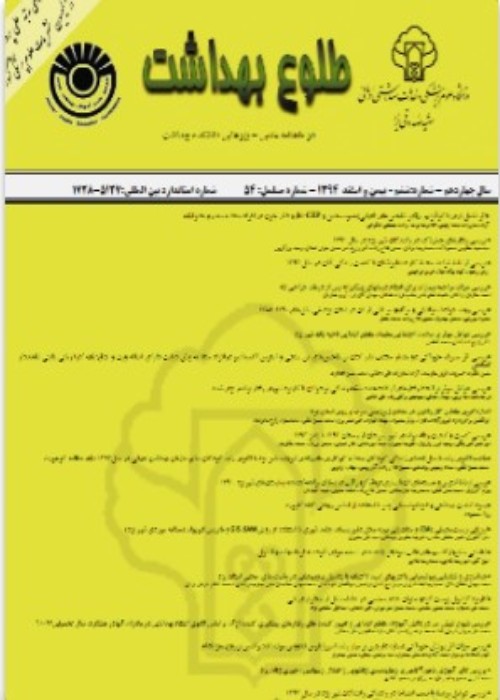Synthesis and in Vitro Evaluation of Antifungal and Antibacterial Activity of 2,3-dihydroquinazolinone Derivatives
Author(s):
Article Type:
Research/Original Article (دارای رتبه معتبر)
Abstract:
Introduction
By development of bacterial drug-resistance to traditional antibacterial drugs and fungal infections, the need to design, synthesis, and use of new and effective antibacterial and antifungal drugs is increased. Quinazolinone derivatives are heterocyclic compounds with nitrogen atoms that have pharmacological properties such as anti-bacterial, anti-tumor, anti-inflammatory and antifungal properties. The aim of this study was to synthesize of new derivatives of dihydroquinazolinone and study of their anti-bacterial and antifungal properties.
Methods
This research is an experimental work in which four dihydroquinazolinone derivatives were synthesized, by a new environmental-safe method and identified by various spectroscopic methods. Antibacterial activities of these derivatives were investigated against Escherichia coli gram-negative, and bacillus subtilis gram-positive in comparesion with amikacin. Antifungal activities of these derivatives were investigated against Aspergillus niger fungus and compared with ketoconazole. Both of antifungal and antibacterial activities of these synthetic compounds derivatives was checked by disk diffusion method with measuring the zone inhibition.
Results
All synthetic dihydroquinazolinones that were synthesized in high yields and purity, showed good antibacterial and antifungal properties. The compound 1d 2-phenyl-2,3-dihydroquinazolin-4(1H)-one derivative of these compounds showed more antimicrobial activities and antifungal comparable with the Amikacin and Ketoconazole standard antibacterial and antifungal drugs.
Conclusion
Synthetic dihydroquinazolinone derivatives in this work have good antifungal and antibacterial activities. The higher antifungal and antibacterial activity of 2-phenyl-2,3-dihydroquinazolin-4(1H)-one derivative can be related to more hydrophobicity of the phenyl group as a substitution in position 2.Keywords:
Language:
Persian
Published:
Tolooe Behdasht, Volume:17 Issue: 3, 2018
Pages:
77 to 85
magiran.com/p1887540
دانلود و مطالعه متن این مقاله با یکی از روشهای زیر امکان پذیر است:
اشتراک شخصی
با عضویت و پرداخت آنلاین حق اشتراک یکساله به مبلغ 1,390,000ريال میتوانید 70 عنوان مطلب دانلود کنید!
اشتراک سازمانی
به کتابخانه دانشگاه یا محل کار خود پیشنهاد کنید تا اشتراک سازمانی این پایگاه را برای دسترسی نامحدود همه کاربران به متن مطالب تهیه نمایند!
توجه!
- حق عضویت دریافتی صرف حمایت از نشریات عضو و نگهداری، تکمیل و توسعه مگیران میشود.
- پرداخت حق اشتراک و دانلود مقالات اجازه بازنشر آن در سایر رسانههای چاپی و دیجیتال را به کاربر نمیدهد.
دسترسی سراسری کاربران دانشگاه پیام نور!
اعضای هیئت علمی و دانشجویان دانشگاه پیام نور در سراسر کشور، در صورت ثبت نام با ایمیل دانشگاهی، تا پایان فروردین ماه 1403 به مقالات سایت دسترسی خواهند داشت!
In order to view content subscription is required
Personal subscription
Subscribe magiran.com for 70 € euros via PayPal and download 70 articles during a year.
Organization subscription
Please contact us to subscribe your university or library for unlimited access!



